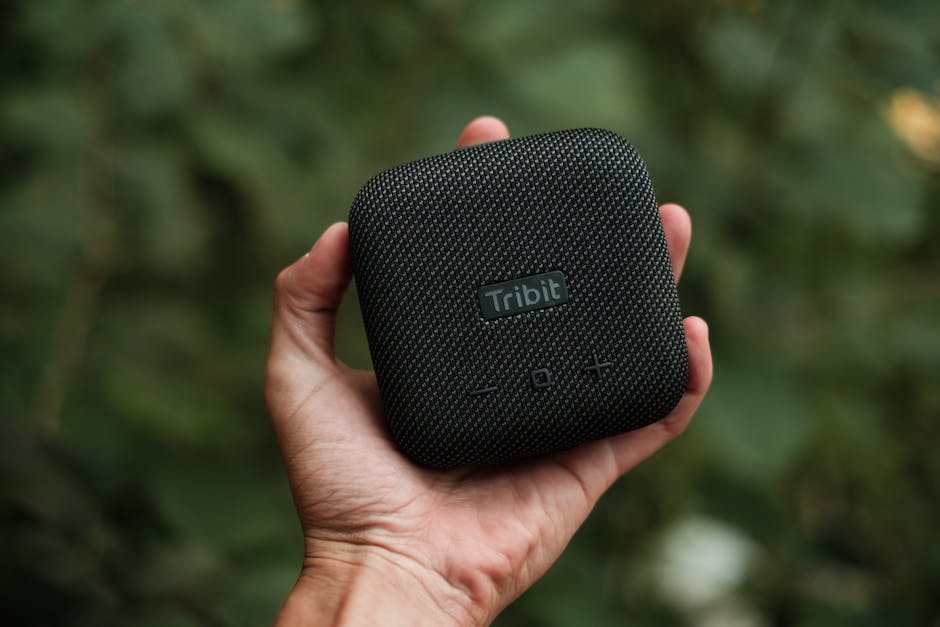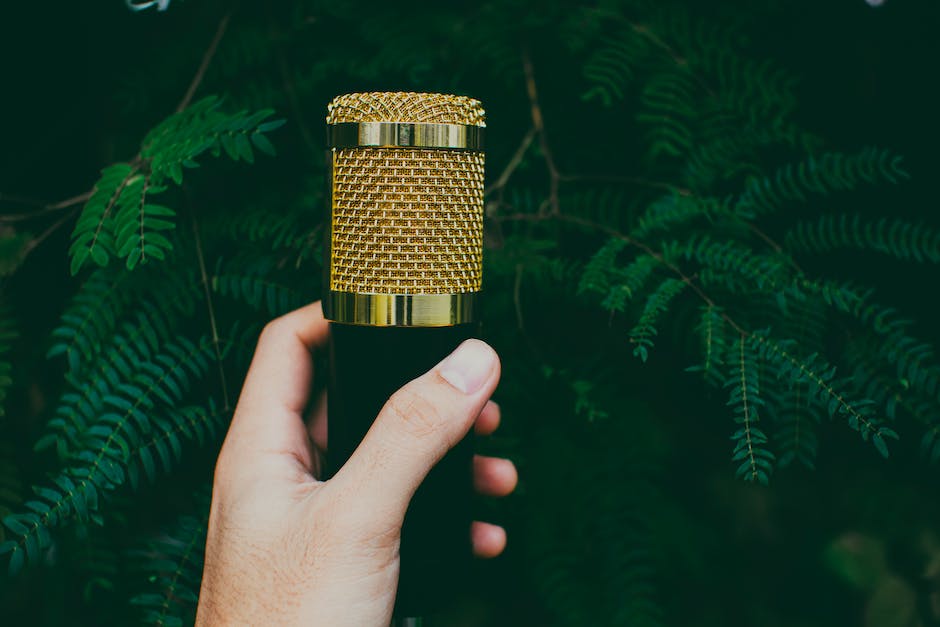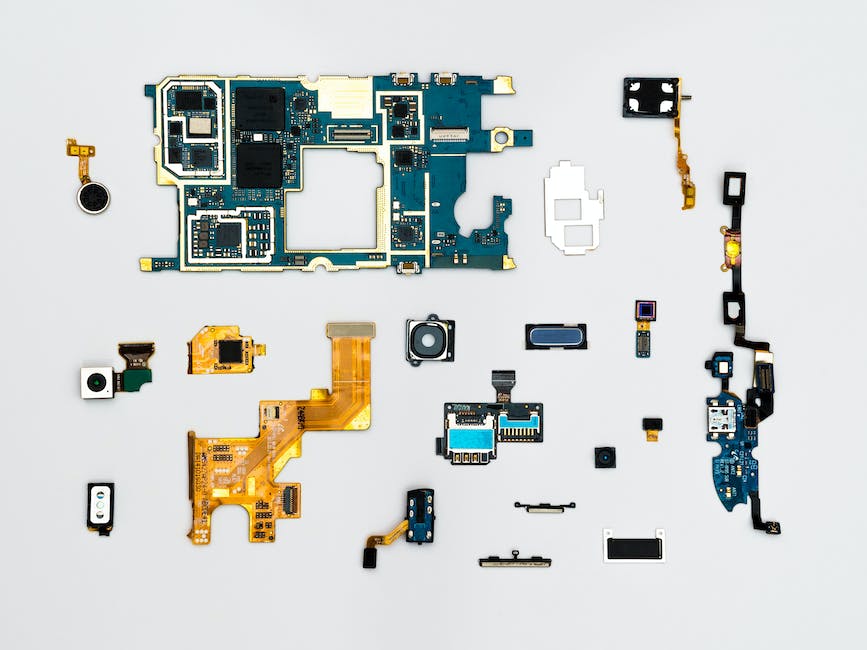Immerse yourself in the world of ambient and field recording, an exploration of the invisible yet omnipresent aural tapestry that blankets our lives. A pioneering juncture of art and technology, this practice gifts us the power to capture, curate, and communicate the sounds of our world, transforming the way we perceive and interact with our surroundings. Our journey starts from the fundamentals, delving into the roots, the required equipment, and techniques that make this sonic endeavor possible. We then traverse the landscape of active listening, understanding how this method shifts our perception and awareness. Lastly, we examine the practical applications within diverse fields and get acquainted with the pioneers of this realm.
The Fundamentals of Ambient and Field Recording
Harmonizing with the Symphony of the World: The Primer to Recording Ambient Sounds and Soundscapes
The world, in its breathtaking entirety, dances to the sweet symphony of life; every gentle breeze, each rustling leaf, the steady rhythm of urban life — all composing an orchestra of sounds that sing the beautiful narrative of our existence. Recording these ambient sounds and soundscapes, is akin to capturing the very soul of the earth.
In essence, recording ambient sound is the art of giving voice to silence — a process of uncovering and transforming the subtle, often overlooked whispers of nature or the environment, into a significant, perceptible tapestry of musical expression. But how does one harness the rhythms of the planet into a tangible symphony? It begins with understanding the foundation on which sound recording is built: field recording.
Field recording is based on the concept of capturing audio in its natural element — outside the constructs of a traditional recording studio. The rich cacophony of a bustling city street, the serene composition of a quiet forest, the rhythmic percussion of a pounding rain or the syncopated dance of a busy anthill, all fall within this realm of harmonious narratives.
Engaging in field recording demands an open ear and a discerning perspective. The most crucial tool, however, is the recorder. Digital audio recorders offer high-quality recordings, often in Wave or MP3 formats, that maintain the integrity of the captured sound. Further, the use of external microphones, like binaural microphones that imitate the human hearing process, can capture a captivatingly life-like audio experience.
Acoustic ecology, the study of the relationship between living beings and their environment through sound, guides this process. Soundwalks, essentially guided or self-directed explorative walks dedicated to attentive listening, are a fundamental practice of acoustic ecology. They present an invaluable opportunity to explore the potential soundscapes before the recording process, adding depth and dimension to the art.
Integral to this pursuit is respecting and embracing the intricacies of the environment. Unlike studio recording that seeks to eliminate background noises aiming for a singular sound, recording ambient sound involves a significant switch in philosophy. It involves embracing these “background” sounds; the melodic chirping of the birds, the resonant hum of civilization, and the sighing of the wind all become part of the musical narrative.
Captivating soundscapes don’t just happen; they unfold on the canvas of silence. Recording these audioscapes requires adopting a measured pace, showing patience, and developing a keen ear for unique sound patterns. Fine tuning your sensitivity to the subtle nuances of sound can lead to an incredible array of recordings that bring the listener right into the heart of the soundscape.
In summary, recording ambient sounds is about capturing the essence of a place or moment in its auditory form. This symphony of life, with its various sections from the cascading waterfall to the bustling traffic junction, breathes life into the pure essence of human experience. Whether it serves as environmental texture for a film, the base for a new musical piece, or an evocatively tantalizing podcast, this rich palette of ambient sounds transitions from being mere backdrop to center stage, intertwining irrevocably with our perceptions and memories.
Indeed, if music is the universal language, then the ambient sounds of the world are the conversations the earth has with itself. Recording these sounds, therefore, is not just an act of art; it is a testament to life as we hear it, an archive of our very existence. The world is an orchestra waiting to be conducted; will you pick up the baton?

The Art of Listening: Experiencing the World Through Sound
Immersing ourselves in the rhythms, textures, and patterns of natural sounds, we become attuned to the intricate concert playing around us. It’s like finding oneself amidst a persistent orchestra, one where every sound plays a pivotal role, be it the rhythmic patter of rain, the serene murmur of a bubbling brook, or the gusty sigh of the wind. Field recording presents us with this opportunity – to pause, listen, and marvel at the diverse symphonies painted by Mother Nature.
Amid the cacophony of modern life, field recording offers an invaluable reset button by tuning our ears to the earth’s score. The hiss of leaves rustling, the melodious liquid gold of a lark’s song, the sonic heartbeat of a city’s bustle – it all comes alive vividly, echoing infinitely in our minds. By recording ambient sounds, we immerse ourselves into a realm of sensory amplification, birthing newfound respect and connection with our immediate surroundings.
Crucial to this awe-inducing journey is the constant evolution in field recording technologies. Be it capturing tropical rainforests’ dripping sonorities or the dense, pulsing beat of an urban sprawl, these devices have opened up new edges of authenticity. Hand-held recorders and stereo microphones, with their wizardry of transformation, make possible a rich, immersive audio experience that’s near indistinguishable from the real-life source.
Beyond the realm of pure audio aesthetics, these ambient recordings also find profound utility in our everyday lives, facilitating creative expression across various domains. Imagine an indie filmmaker bringing alive a cinematic landscape, a soundscape with texture and depth, achieved solely through ambiance and field recordings. Or a musician weaving in the chirps and trills of a sunrise chorus into a soul-stirring melody. The potential is astounding, teetering on the edge of limitless.
Ambient sounds have a storytelling uniqueness of their own. The spectral quality of a wind whoosh, the subdued hum of a nocturnal insect community, the euphony of a morning’s dew settling; these are not merely sounds – they unveil profound narratives of our environment. Indeed, the language isn’t binary nor alphanumeric; it’s spectral, pulsating, oscillating, a sonic dialect that spans across all beings.
Furthermore, the recorded ambient sounds become an essential historical record, a sonic postcard of our times. With increasing urbanization and the perils of climate change playing havoc with our ecosystems, these sound bites are invaluable. They serve as aural reminders of the rapidly changing soundscapes of our planet, an archive of our existence.
In conclusion, ambient and field recording serve as a powerful tool to foster an intimate connection to our environment, bringing the otherwise unseen and unheard to life. It expands our sonic horizon, tuning our senses to a broader range of frequencies, thereby enriching our perception of the world. As we step out into the sound-filled world, let’s not just hear; let’s truly listen. Strike a chord to that! Whether we’re donning the hat of an acoustic ecologist, sound artist, field recordist, or an impassioned music lover, each ambient sound represents an unspoken dialogue. Music, in all its varied forms, remains the universal language, and field recording only symbolizes the earth humming its favorite tune. This isn’t just about music. It’s about life’s pulsating rhythms, the chorale of existence, and the harmonies of the natural world.

Practical Applications of Ambient and Field Recording
At the confluence of music and nature, field recording and ambient sounds hold a pivotal place. They open a portal not just into the notes of an unseen orchestra but also to the spirit of a milieu in all its unaltered authenticity. Peppered within compositions or as pure standalone pieces, these sonic snapshots have the potency to convey a narrative more dynamic than a thousand words.
In the world of music production, ambient recordings have marched their way into the realm of sound design elements. Imagine the magical element the whisper of a forest breeze, the chirping symphony of crickets, or the urban chatter of a bustling city brings to a musical piece. Musicians and sound designers can weave an intricate tapestry of music where nature becomes the quintessential collaborator. Ambient sounds transport listeners, not just through melodic journeys but spatial ones, drifting from cityscapes to echoing caves, and spiraling rainforests. They form the backbone of immersive aural experiences and add depth to the dimensionality of music.
Yet, its influence stretches beyond music to forms of audio-visual storytelling such as film and video. Ambient sounds breathe life into cinematic environments, creating a sense of place and time that is palpable to the viewers. Oftentimes, it is these subtle layers of atmospheric audio that truly plunge a viewer into the heart of the narrative. From the rustling leaves and distant birdcalls in a jungle scene to the white noise of a busy restaurant, these background hums solidify the illusion of reality within the make-believe of movies.
Moreover, ambient sounds have found a home in the ever-evolving domain of podcasts, where rich soundscapes serve as invisible set designs to create compelling auditory narratives. They add texture to podcasts, transforming them from monologues to holistic sound experiences. For instance, a podcast about life in a mountainside village takes on another layer of navigation when brushstrokes of folk tunes, the distant tolling of a church bell, or the chatter of market-goers pepper the background.
Field recording is a tool that fosters intimacy and builds bridges between the human and the natural worlds. It urges us to uncloak our senses to the splendor of the natural world, to the music that wafts from every corner – in the rustle of the wind, the symphony of the wildlife, even in the steadfast rhythm of our own heartbeat. It implores us to pause, marvel, and find beauty in the crescendo of a thunderstorm or the tranquil melody of a stream, rendering it an organic conduit to more mindful living.
Furthermore, ambient sounds serve as a sonic archive, preserving the endless dialogues between man and his environment. The soundscapes we capture today serve as a testament to our existence, documenting the ever-evolving symphony of life that will echo for posterity.
Field and ambient recording paints our world with its resonant voice, a sonorous panorama that serenades us with its natural charm. The crux of their magic lies in their ability to transcend language and border, uniting us in one universal melody – the music of life. Therefore, the art of recording ambient sounds and field recording is the world, strumming its favorite tune and introducing us to the joy of listening beyond just hearing. The ultimate message, however, lies in the pressing need to preserve these inimitable harmonies by safeguarding our environment, the grandest concert stage of all.
In essence, the fusion of field recording and ambient sounds into various facets of sound expression is not just an artistic choice but an intimate exploration of our existence, a timeless chronicle that connects us back to the roots of our primal ballad.

Notable Works and Practitioners of Ambient and Field Recording
Ceding the limelight to pioneering artists, musicians, and composers in the arena of ambient sounds and field recording, the legacy they have bestowed upon the soundscape of the world is nothing short of remarkable. These individuals have offered ingenious ways of listening, and have discoursed profound narratives about our environment through their meticulous and creative fusion of ambient sounds and music.
In the vanguard of pioneers, John Cage, lauded as one of the most influential characters in ambient music, pushed the bounds of conventional composition through his piece “4’33”. His radical approach of incorporating silence and environmental sounds into his music has had a profound impact on the genre’s evolution, teaching us that there is no such thing as absolute silence, and that the ambient noise often deemed as background, is indeed music in itself.
Echoing Cage’s ethos, Brian Eno, further augments the expansive loom of ambient music. The illustrious creator of the ambient album “Music for Airports,” Eno’s effortless manipulation of mellifluous tones and subtle textures conveys an insightful lesson that music can be designed to modify one’s state of mind. His work, both meditative and invigorating, is a testament to the multi-faceted impact ambient music can have on our mental state.
Famously known for his extraordinary ability to incorporate natural and industrial sounds into ambient textures, Steve Roach is another maestro worth mentioning. His fascinating inventory of ambient music conscientiously intertwines tonal elements and abstract sounds, teaching us about the boundless palette of noises that can come to life through music.
When considering the impact of field recording, no acknowledgment would be complete without Chris Watson. From capturing the ferocity of an Amazon rainstorm to the ethereal whistling of Antarctic wind, Watson is a testament to the storytelling power of nature. He paints vivid auditory pictures, akin to van Gogh’s brush on a silent canvas, reminding us of the profound narratives that can be deciphered from the world around us through careful and attentive listening.
In recent times, artists like Jana Winderen and Francisco López have emerged with avant-garde approaches to field recording. Winderen’s work, often sourced from remote and inaccessible habitats, explores the intricate harmony of concealed soundscapes, demonstrating that ambient sounds can be novel, mysterious, and awe-inspiringly rich in texture. López, on the other hand, goes beyond simple recording, often manipulating raw environmental sounds to create unique auditory experiences that challenge our understanding of ambient sounds.
Collectively, these artists reaffirm that ambient and field recording are more than mere platforms for technical prowess. They reveal the inherent melodic poetry that unfolds within the cacophonies of the city, the delicate whispers of the wilderness, the dramatic roars of the ocean. Through their contributions, these artists urge us to dispel our aural indifference, to truly listen, and to understand that the intricate sounds of our world are not merely background noise, but an essential orchestration encapsulating the pulse of life.
In a world increasingly consumed with visual stimuli, these pioneering musicians serve as reminders to keep our ears open, to seek stories and meaning in the often overlooked auditory details, and to foster a harmonious connection with our sonic surroundings. The artists invite us, time and again, to truly listen, to hear the hidden melodies and unpredictable harmonies. To ultimately perceive the symphony of the world beneath the cacophony, and to hum along.
In conclusion, the ramifications of these artists and their contributions to ambient and field recording reveal an immediate challenge and opportunity – to reorient our listening practices, to thread silent stories through sound, and to contemplate the music transpiring in our everyday lives. As we journey into the deepest crevices of sound, we begin to unearth the unspoken narratives that lie within the auditory landscapes, echo the pulsations of music’s universal language, and ultimately, harmonize with the earth’s resonating hum.

The Future of Ambient and Field Recording
Harnessing the Potential of Technology in Enhancing Ambient and Field Recording
The evolution of technology has opened up myriad possibilities in the realm of field recording and ambient music, promising even greater levels of realism, depth, and subtlety in audio capture. Binaural microphones, once a niche and expensive technology, are now increasingly affordable and accessible, potentially making every ‘ear’ in the world a conduit for shared auditory experiences.
Augmented reality and Virtual Reality strides have posed tantalizing new prospects for enveloping listeners in soundscapes previously consigned to headphones. Imagine immersing yourself in the boisterous coastlines of Maine or the tranquil breezes of a Japanese bamboo forest, your physical reality transformed by a pristine, field-recorded soundscape. The spatial audio capabilities of these technologies promise, in time, to make this a shared, communal experience.
Drones offer another compelling frontier for field recording. With the capacity to capture sound in places previously inaccessible to human recordists, drones could vastly extend the scope and perspective of field recordings. The sonic landscape of a forest, for example, would reveal remarkably different textures when captured from the ground versus from an aerial perspective.
Artificial intelligence (AI) is an underrated player in the field recording and ambient sounds arena. With commendable precision, AI has the potential to identify and tag distinct sounds within complex soundscapes, such as identifying different bird species within a forest dawn chorus. Not only would this add an educational layer to field recordings, but it could also provide unique tools for composers and sound designers, such as the ability to isolate specific sounds from an ambient recording with unprecedented accuracy.
Machine learning, a subset of AI, offers intriguing possibilities for the evolution of ambient sounds. Algorithms could analyze vast amounts of music and sound to generate new ambient soundscapes, resulting in potentially endless generative music. This opens up potential for unique, personalized ambient experiences, as soundscapes may be tailored to an individual’s preferences or moods.
There’s also imminent transformation in the way field recordings are preserved and shared. Blockchain technology, while most associated with cryptocurrencies, has the potential to create decentralized, permanent archives of recorded sound. This could prove an invaluable resource for sound artists, researchers, and anyone interested in preserving the auditory heritage of our planet.
There should be anticipation, but not without a note of caution. As technology enables us to capture, analyze, manipulate, and share sounds in ways never before possible, there’s an imperative need to reflect on the ethics of these advancements. How do we negotiate the right to privacy when drones can potentially record sounds anywhere? How do we preserve the sanctity of natural spaces while making them accessible through VR? How do we avoid monotony and homogenization, when AI algorithms favor sounds and patterns that tend to get the most engagement?
These considerations ought to inform our journey to the future of ambient and field recording. Yet despite its complexities, technology, if wielded with sensitivity, holds the promise of deepening our connection with the beauty and diversity of sounds around us, weaving it into our lives in ways we are just beginning to imagine. As intriguing as circumnavigating the auditory globe from the comfort of an armchair might sound, its future appeal may well lie in its capacity to make us more passionate listeners, more connected to the intricate symphony of our sonic environment and, ultimately, more human.

The fascinating tapestry of ambient and field recording doesn’t end here. As technology evolves, bringing new equipment and systems like spatial audio, virtual reality, and AI into the fray, field recording is set for an ambitiously innovative future. These developments promise to expand our capabilities, push creative boundaries, and open doors to unimagined sonic possibilities. The enduring allure of this discipline lies in its capacity to reveal the intricate details of our acoustic environment, foster new connections, and inspire ingenuity. So, let us keep our ears tuned to the world around us, eagerly anticipating what unheard symphonies the future of ambient and field recording might unveil.

Comments.
Currently there are no comments related to this article. You have a special honor to be the first commenter. Thanks!